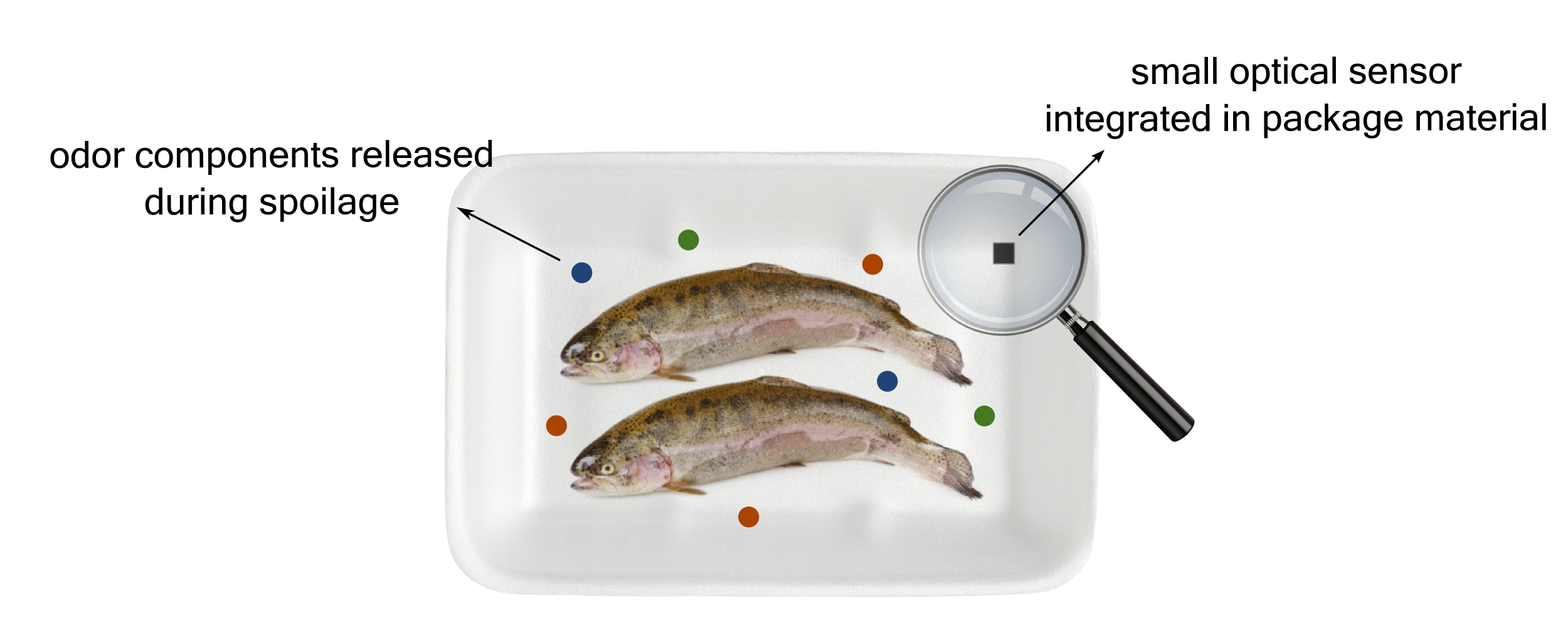According to some estimates, about one-third of the food produced goes to waste and discarded. One contributing factor to this problem is the expiration date shown on food packaging. This is currently the only method available to estimate when food becomes spoiled. However, to protect public health, it’s based on a very cautious estimate. You could see the expiration date as the earliest possible moment when the food within the package is spoiled, a kind of worst-case scenario. Of course, spoilage is dependent on many factors, and—as with all biological processes—there’s a natural variation on when food is truly unfit for consumption.
To tackle this problem, the universities of Ghent, Brussels, Leuven, and Nijmegen are collaborating in the CheckPack project. We sat down with the scientific coordinator of the project, Mike Vanderroost, for a chat on intelligent food packaging.

Your food wrapper becomes smart
The CheckPack project explores options for what is called intelligent food packaging. The idea is that sensors, indicators, and communication devices present in the packaging can give real-time information about the package, its nearby environment, and the contained food. They can provide an accurate view of whether a food item is spoiled.
“Some microorganisms present on the food cause it to spoil,” explains Vanderroost.
During this process, specific molecules, so-called volatile organic compounds (VOCs), are produced. These can be detected to give an indication of food spoilage.
To turn the signal of the VOCs into information, CheckPack has developed a light-based microchip.
“The sensor consists of two parts,” elaborates Vanderroost. “A coating, which functions as a receptor for the VOCs, is added to a chip with very small optical circuits through which light can pass. As the VOCs adhere to the coating, the optical properties of the coating change. This change is related to the concentration of VOCs and can be measured by aiming light at the chip with, for example, a barcode scanner. The sensor can thus be used to determine whether food is still consumable.”
Beyond food
The applications of an intelligent package that can monitor the condition of packaged food are impressive. A sensor such as the one developed by CheckPack can give information on both food expiration and package integrity. By measuring CO2 levels, for instance, package leaks can quickly be detected, a very handy feat for fresh food products that are packaged under a modified atmosphere.
“These types of sensors even have applications beyond the food industry,” reveals Vanderroost. “Pharmaceutical products and even laboratory equipment can benefit from this technology. Any process that results in the release of certain gasses can be detected and quantified.”

This packaging, which provides continuous information on food status or package integrity, is not only beneficial for the final consumer. It is a very handy tool for quality control throughout the supply chain and enables the detection of hazards and possible fraud from the producer down to the consumer. For this reason, early tests of the technology are probably going to take place within the food industry supply chain, as practical standards and protocols need to be followed strictly in this environment.
Although the CheckPack project is currently working on prototypes of intelligent packaging, it might still take some time to get this technology to the market.
This research is still in its early days, although it’s becoming more popular at a steady pace. However, once the technology is on point, the various regulatory bodies still need to approve and implement it, which can take a significant amount of time. Vanderroost concludes: “Although it might take 10 to 15 years before we can practically and generally apply our sensors, intelligent food packaging is an innovation that’s definitely going to happen.”


